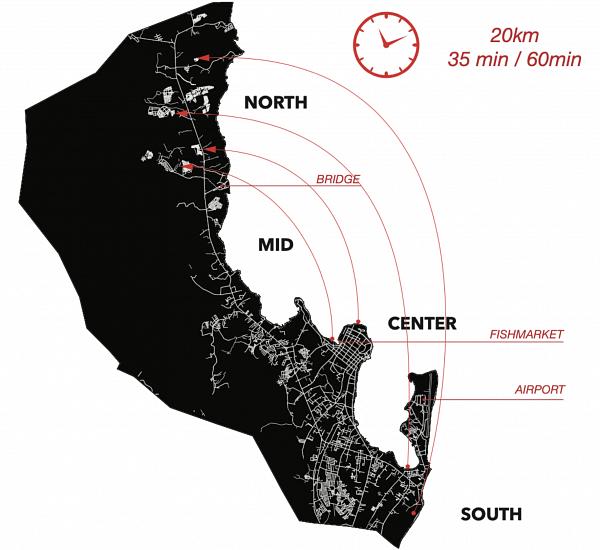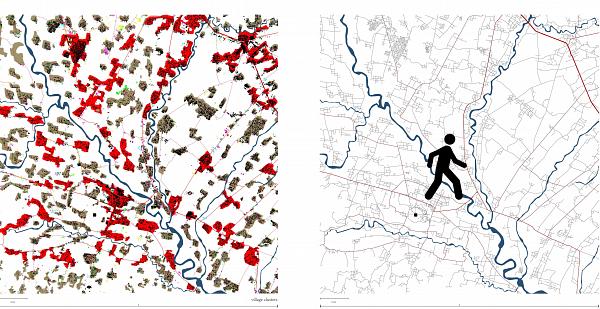Book: Zero City
BACKFLAP BLURB
As the urban epoch accelerates, we have collectively placed our faith in cities, notably variations of ecocities*, as a remedy for a multitude of global environmental exigencies. However, the limitations of the ecocity* as an environmental panacea is rapidly becoming more evident. Moreover, the model itself is proving severely flawed. Yet under the guise of sustainability, the new town* model and its many derivatives have seen a revival. Increasingly, large, insular ecocity* projects are lauded in popular discourse, and even in academic circles, while the inherent drawbacks and poor track record associated with these urban typologies remain overlooked. Rigorous scrutiny, specifically questioning how these projects operate within their broader socioeconomic and ecological contexts, is overshadowed by bold proclamations about the performance of the technologies they incorporate.
The fervour surrounding these projects, particularly in Asia, is understandable. As the environmental challenges mount, there is a pressing need for meaningful urban solutions. However, Asia's urbanity defies entrenched notions of spatial planning and, by extension, conventional paradigms of sustainability. The increasingly muddled context renders self-contained and inward-looking projects more appealing, yet less effective. China's remarkable rise is a case in point. The transformation of its metro regions into a vast hyper-suburbanised landscape reveals a disturbing and paradoxical trend: the emergence of a world of starkly contrasting rural/urban/industrial systems fused together into a mundane and muddled monotony.
As cityscapes become simultaneously expansive and disjointed, we must adhere to the reality that in these settings planning efforts are invariably counterproductive. The city can no longer be perceived as a static and finite entity on the Cartesian plane, and as such it cannot be the product of a grand design or a short-term vision. More often, it is a by-product of our faltering attempts to impose order on the unruly process of rapid urbanisation. The conflicting conditions it engenders—characterised by both speed and stagnation, by interconnectivity and fragmenting, and by extreme built-up densities and urban spaces void of people—demand from the planning community that we develop new tools that are firmly rooted in new theories.
China has provided the urban laboratory for the case studies and planning projects in this volume. They present a variety of non-static, cross-scalar, and site-specific models of urban renewal, all based on the principles of dynamic density*. These projects embrace rather than reject the city’s inherent compactness and complexity, harnessing new ways of experimentation for an amorphous and still ill-defined habitat that is intrinsically adverse to empirical testing, yet as a complex adaptive system* thrives on its ability to evolve and adapt.
China's explosive urbanisation offers a rare benchmark for comparative research. As a hyper efficient and hermetic planning system, Chinese urbanism* is at the forefront of both sustainable planning and the new town* resurgence. While acknowledging its qualities of affordability, speed, transit oriented development, and (areas of) hyper density, ultimately, ZERØ CITY* concludes that, Chinese urbanism* continues the legacy of context-averse new town* and greenfield planning.
In order to streamline future land use globally, ZERØ CITY* calls for a complete moratorium on new towns*. This should curb new urban projects planned outside the realm of existing cities, thus enhancing the innate tendencies of the urban network, rather than working against them. However, this makes ZERØ CITY* not just another dogmatic manifesto. This intentionally simplistic goal of a moratorium on greenfield projects aims to fundamentally change the direction of the spatial disciplines, in order to bridge the gap between advanced urban theory and the corporate planning practice; a schism that currently prevents us from actualising the promise and potential of the ecocity* concept.
About the Authors
ZERØ CITY* is written by Neville Mars based on projects by MARS Architects and its research arm, the Dynamic City Foundation, which brings together a broad team of experts in urban planning, environmental policy, and sustainable development.
Release Schedule
“Zero City” will be unveiled one chapter at a time, allowing readers to digest and discuss each topic in depth. The release schedule is as follows:
- Chapter One: Available January 2025
- Chapter Two: February 2025
- Chapter Three: March 15, 2025
- Subsequent chapters will be released monthly
Subscribe for Updates
Stay informed about the latest releases and updates from “ZERØ CITY* : Subscribe to our newsletter and never miss a chapter.
Social Media
Join the conversation about the future of urban living. Follow us on social media for insights, discussions, and sneak peeks of upcoming chapters:
- INSTA Architecture Studio: MARS_Architects_Bali
- INSTA Urban Research: _Zero.City_
- Facebook: MARS Architects
- LinkedIn: MARS
Chapters
Ready to explore the cities of the future? Here is a preview to upcoming chapters:
-

The Grey Zone -

Field Notes From the Frontlines -

The Green Edge -

Taobao / Urbanity Unhinged -

City As Relay -

The Node -

The Field -

In / Formality -

Sino-Dutch Ecocity -

Resilient Pudong -

Brain / Park -

CLOUD CITY! -

Urban China Magazine -

An Unwanted City -

United Mumbai -

Metro Java -

The New in New Town -

Desa Tumpuk -

Glossary
Owned by neville mars / Added by neville mars / 16.9 years ago / 120565 hits / 29 hours view time
Tags
Latest Entries
Contribute
Login to post an entry to this node.

